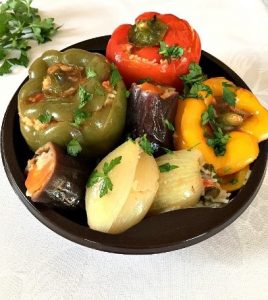Turkey is one of only seven countries in the world that can produce enough food to feed its people. They have the advantage of having access to fresh local ingredients and off-the-boat fish. Turkish food is based on freshness and contrary to popular belief is not spicy. The seasoning and sauces frequently used are simple and light as not to overpower the food’s natural taste.
Each different region of Turkey has its own cuisine unique to its environment. The Aegean Region, where Istanbul is located, inherited elements of the Ottoman empire and is especially famous for its olive oil dishes. The Mediterranean region is rich in vegetables, herbs and of course fish. Up in the north where the Laz people live they cook with hamsi (anchovies), milk and savoy cabbage native to the Black Sea. Each region adds to the Turkish cuisine in a different way making the cuisine cover a variety of dishes.
While Turkey doesn’t have one true dish that symbolizes its cuisine, there are several popular recipes like Dolma, which is just stands for stuffed foods, that are traditional to the country. Rice-and-meat stuffed vegetables is popular prepared with peppers, grape leaves, or tomatoes. Pilav, Turkish rice, is also used as a common filling for dolma or as a side dish. Another common dish to come from Turkey is kebap or skewered meat. Turkish meat usually means lamb, but they also enjoy kofte, patties of seasoned minced meat like beef or pork.
Turkish cuisine influence is everywhere from drinks to desserts. Many common dishes like Turkish delights, manti, beef or lamb dumplings, and even yogurt originated from Turkey. Their powerful history is spread throughout the world through their dishes.



